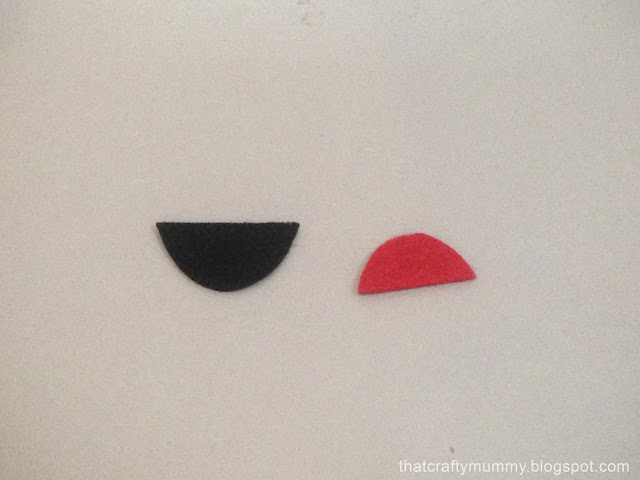My 18mo tiny human has recently developed an interest to carry bags, and of course, to take everything out from the bag too. She would get herself so busy by dragging bags as big as her, or even doubles her size here and there. Yes, you are right! The consequence of this: she often trips herself over the bags. And kids being kids, she would scream her lungs out if I were to take it away. Since I've plenty of scrap fabrics from my previous projects, I decided to make her a small drawstring pouch so that she can play around with it. This seems like a long post but it's really not that difficult to make. Hehe.
Materials:
White outer fabric (I used cotton-linen)
Inner fabric (I used Japanese cotton)
Pink fabric
Fusible web (optional)
Pink embroidery thread
Washable fabric marker/ chalk
String/ ribbon
Method:
1. Cut fabric based on the measurement below. I draw and cut my ear template on a piece of manila card before tracing on the fabric and cutting it. Cut fusible web to the exact size of the pink ear fabric.
2. Sandwich fusible web between the white and pink fabric. Place iron on top and apply heat until the fabrics bind together. Sew around the pink fabric using zig-zag or blanket stitch. It's fine too if you don't have fusible web, just pin fabrics together or baste by hand stitching.
3. Place the ear fabric right sides together and sew, leaving the bottom of the ear open. Clip curves to remove fabric bulk. Flip the ears inside out and the bunny ears are all done.
4. Draw two small triangles on the bottom of all the outer and inner fabrics.
5. Fold the triangle in and sew it down on the wrong side of the fabric.
6. You'll end up with something like this on the right side of the fabric. Mark 3 dots at the centre of the front piece as a guide to sew the bunny's nose.
8. Draw the mouth and sew on the marking by using back stitching. Do the same to get the eyes.
9. Sew the outer fabric right sides together. Repeat for inner fabric, but leave a small opening to turn the pouch inside out later (if you look close enough, there's no opening in this picture because I forgot to, so I ended up ripping seams to get a small opening >.<). Overcast raw edges. Put the outer pouch into the inner pouch and match the seams on the sides.
10. Prepare casing (from the 5 x 12 cm rectangles) as shown in picture.
10. Yay, it's finally time to put all pieces together. Sandwich prepared casing fabric between outer fabric and inner fabric (the casing fabric should be slightly shorter, so just place it in the middle). Repeat for the back of the pouch with another folded rectangle. Now sandwich the bunny ears between the outer fabric and casing fabric (make sure the bunny ears are put in the right direction so that it is facing forward).
13. Close the opening using ladder stitch. Push the lining fabric back into the pouch.
14. Attach safety pin to one of the end of the string. Thread it through the casing on one side then back around the other side. Tie the ends in a knot. Repeat with another string on the opposite side of the pouch.
15. Using a ladder stitch (i.e. an invisible stitch), sew the bunny ear to the casing to give the ears some support. Be careful not to stitch through the ear. You will want to just stitch the surface layer of the ear to the casing.
Ta-daah! this is the final look of the bunny drawstring pouch.
This pouch is really small so that it's easier to be carried by my tiny human. It'll fit a few packs of tissue paper and a mini box of raisin (to distract Baby V when she is throwing tantrums). Do adjust the size of the pouch accordingly if you are making it for older kids, or even yourself. If you are confused with any of the above steps, please drop me a message so that I can help you figure out. Happy sewing! :D

































































